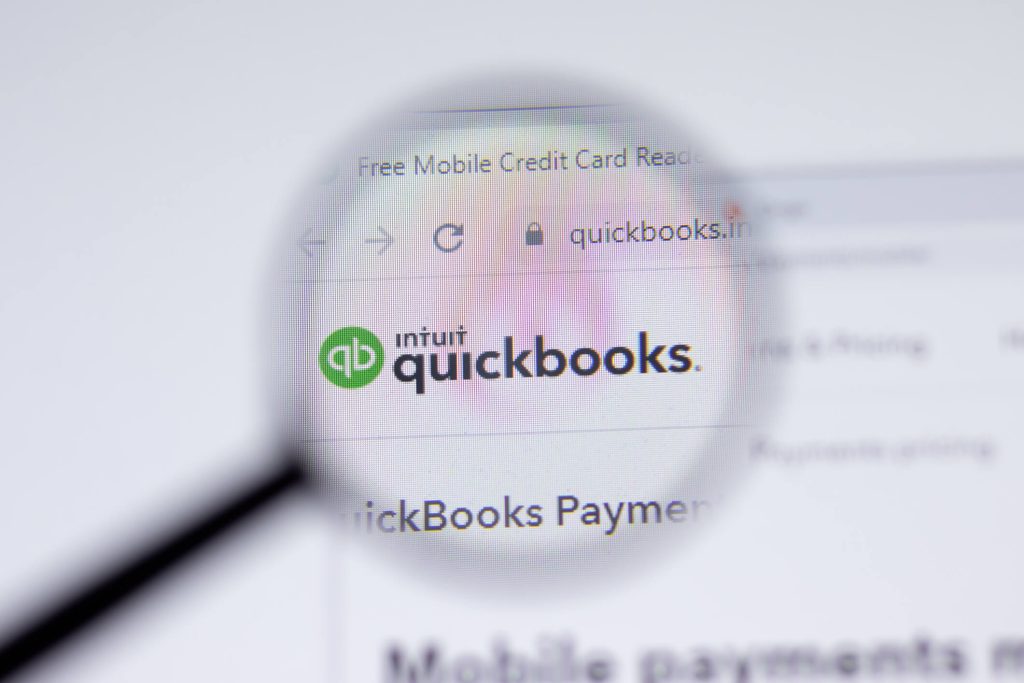In today’s digital age, technology plays a crucial role in streamlining business operations and enhancing efficiency. For dentistry businesses, integrating QuickBooks with merchant services can be a game-changer. This comprehensive guide will walk you through the benefits of integrating QuickBooks with merchant services, how to choose the right provider, step-by-step integration process, and maximizing the benefits of this integration.
By the end of this guide, you will have a clear understanding of how this integration can revolutionize your dentistry business’s financial management.
Understanding the Benefits of Integrating QuickBooks with Merchant Services
Integrating QuickBooks with merchant services offers numerous benefits for dentistry businesses. Let’s explore some of the key advantages:
1. Streamlining Financial Management for Dentistry Businesses
Managing finances is a critical aspect of any business, including dentistry practices. By integrating QuickBooks with merchant services, you can streamline financial management processes. This integration allows for seamless synchronization of transactions, invoices, and payments, eliminating the need for manual data entry. As a result, you can save time, reduce errors, and have a real-time view of your practice’s financial health.
2. Enhanced Payment Processing Efficiency
Dentistry businesses often deal with a high volume of payments, including insurance claims, patient payments, and third-party payments. Integrating QuickBooks with merchant services enables you to process these payments efficiently. With a merchant services provider, you can accept various payment methods, such as credit cards, debit cards, and electronic checks. This flexibility not only improves the patient experience but also accelerates cash flow.
3. Improved Accuracy and Data Integrity
Manual data entry is prone to errors, which can have significant consequences for your dentistry business. By integrating QuickBooks with merchant services, you can eliminate manual data entry and ensure accurate and reliable financial data. This integration automatically updates your QuickBooks account with transaction details, reducing the risk of human error and ensuring data integrity.
4. Simplified Reconciliation Process
Reconciling financial transactions is a time-consuming task that requires meticulous attention to detail. However, integrating QuickBooks with merchant services simplifies this process. The integration automatically matches transactions, such as payments and deposits, with corresponding invoices, reducing the time and effort required for reconciliation. This not only saves time but also minimizes the risk of errors.
5. Enhanced Reporting and Analytics
QuickBooks offers robust reporting and analytics capabilities, providing valuable insights into your dentistry business’s financial performance. By integrating QuickBooks with merchant services, you can leverage these features to gain a comprehensive understanding of your revenue streams, payment trends, and profitability. This data-driven approach enables you to make informed business decisions and identify areas for improvement.
Streamlining Financial Management for Dentistry Businesses

Efficient financial management is crucial for the success of dentistry businesses. Integrating QuickBooks with merchant services streamlines financial management processes, ensuring accuracy, efficiency, and real-time visibility. Let’s delve deeper into how this integration can revolutionize financial management for dentistry businesses.
1. Automated Transaction Synchronization
Integrating QuickBooks with merchant services eliminates the need for manual data entry. This integration automatically synchronizes transactions, such as payments, refunds, and deposits, with your QuickBooks account. As a result, you can save time and reduce the risk of errors associated with manual data entry. This automation ensures that your financial records are always up to date, providing a clear and accurate picture of your practice’s financial health.
2. Seamless Invoicing and Payment Processing
Generating and managing invoices is a critical aspect of financial management for dentistry businesses. With QuickBooks integration, you can seamlessly generate and send invoices to patients, insurance companies, and third-party payers. The integration also enables you to accept various payment methods, such as credit cards, debit cards, and electronic checks, making it convenient for patients to settle their bills. This streamlined invoicing and payment processing workflow improves cash flow and enhances the patient experience.
3. Efficient Expense Tracking
Tracking expenses is essential for monitoring your dentistry business’s financial performance and identifying areas for cost optimization. QuickBooks integration allows you to automatically track expenses by syncing transactions from your merchant services provider. This integration categorizes expenses, such as supplies, equipment, and utilities, making it easier to analyze and manage your practice’s spending. With accurate expense tracking, you can make informed decisions to reduce costs and improve profitability.
4. Real-Time Financial Reporting
QuickBooks offers robust reporting capabilities, providing real-time insights into your dentistry business’s financial performance. By integrating QuickBooks with merchant services, you can generate comprehensive financial reports, including income statements, balance sheets, and cash flow statements. These reports enable you to monitor key financial metrics, identify trends, and make data-driven decisions. Real-time financial reporting empowers you to stay on top of your practice’s financial health and make proactive adjustments when necessary.
5. Secure and Compliant Financial Operations
Security and compliance are paramount when it comes to financial management in the healthcare industry. QuickBooks integration with merchant services ensures secure and compliant financial operations. Reputable merchant services providers adhere to industry standards and regulations, such as Payment Card Industry Data Security Standard (PCI DSS) compliance. This integration ensures that sensitive financial data, such as patient payment information, is protected, reducing the risk of data breaches and fraud.
Choosing the Right Merchant Services Provider for Your Dentistry Business

Selecting the right merchant services provider is crucial for successful integration with QuickBooks. Here are some factors to consider when choosing a merchant services provider for your dentistry business:
1. Integration Compatibility
Before selecting a merchant services provider, ensure that their payment processing solution is compatible with QuickBooks. The provider should offer a seamless integration that allows for automatic synchronization of transactions, invoices, and payments. Compatibility ensures a smooth workflow and minimizes the need for manual intervention.
2. Payment Methods and Flexibility
Consider the payment methods that the merchant services provider supports. Dentistry businesses often deal with various payment types, including credit cards, debit cards, and electronic checks. Ensure that the provider offers a wide range of payment options to cater to your patients’ preferences. Additionally, consider the provider’s flexibility in terms of payment processing, such as recurring payments and installment plans.
3. Transparent Pricing and Fees
Merchant services providers typically charge fees for their services, including transaction fees, monthly fees, and equipment costs. It is essential to understand the provider’s pricing structure and ensure transparency. Look for providers that offer competitive rates and clearly outline their fees. Avoid providers with hidden charges or long-term contracts that may lock you into unfavorable terms.
4. Security and Compliance
Security is of utmost importance when handling financial transactions and patient payment information. Choose a merchant services provider that prioritizes security and compliance. Look for providers that are PCI DSS compliant and employ robust security measures, such as encryption and tokenization, to protect sensitive data. Additionally, consider the provider’s reputation and track record in the industry.
5. Customer Support and Service
Reliable customer support is crucial when integrating QuickBooks with merchant services. Look for providers that offer responsive customer support and have a reputation for excellent service. Consider factors such as availability, response time, and the provider’s willingness to assist with technical issues or integration challenges. A provider with reliable customer support can help you resolve any issues promptly and ensure a smooth integration process.
Integrating QuickBooks with Merchant Services: Step-by-Step Guide
Integrating QuickBooks with merchant services may seem daunting, but with the right approach, it can be a straightforward process. Follow this step-by-step guide to seamlessly integrate QuickBooks with your chosen merchant services provider:
1. Choose a Compatible Merchant Services Provider
Before you can integrate QuickBooks with merchant services, you need to select a provider that offers a compatible payment processing solution. Consider the factors mentioned earlier, such as integration compatibility, payment methods, pricing, security, and customer support. Once you have chosen a provider, proceed to the next step.
2. Set Up a QuickBooks Account
If you don’t already have a QuickBooks account, sign up for one. QuickBooks offers various plans tailored to different business needs. Choose a plan that suits your dentistry business requirements and follow the prompts to set up your account. Ensure that you have the necessary information, such as your business details and tax identification number, readily available.
3. Enable QuickBooks Integration
Once you have a QuickBooks account, enable integration with your chosen merchant services provider. This process may vary depending on the provider and the version of QuickBooks you are using. Typically, you will need to access the integration settings within QuickBooks and follow the instructions provided by your merchant services provider. This may involve entering your provider’s credentials or API keys.
4. Customize Integration Settings
After enabling integration, customize the integration settings to align with your dentistry business’s needs. This may include selecting the appropriate payment methods, configuring invoice settings, and specifying how transactions should be synchronized between QuickBooks and your merchant services provider. Take the time to review and adjust these settings to ensure a seamless workflow.
5. Test Integration and Troubleshoot
Before fully implementing the integration, it is crucial to test its functionality. Process a few test transactions, generate invoices, and verify that the data is accurately synchronized between QuickBooks and your merchant services provider. If any issues arise during testing, consult the integration documentation provided by your merchant services provider or reach out to their customer support for assistance.
6. Train Staff and Ensure Adoption
Once the integration is successfully tested, train your staff on how to utilize the integrated system effectively. Provide them with clear instructions on generating invoices, processing payments, and reconciling transactions. Encourage adoption of the integrated system to maximize its benefits and ensure consistent and accurate financial management across your dentistry business.
7. Monitor and Optimize
After integrating QuickBooks with merchant services, it is essential to monitor the system’s performance and continuously optimize your financial management processes. Regularly review financial reports, analyze key metrics, and identify areas for improvement. Leverage the insights provided by QuickBooks and your merchant services provider to make data-driven decisions and enhance your dentistry business’s financial health.
Maximizing the Benefits of QuickBooks and Merchant Services Integration
Integrating QuickBooks with merchant services is just the first step. To maximize the benefits of this integration, dentistry businesses need to leverage the combined power of QuickBooks and merchant services for efficient financial management. Let’s explore some strategies to make the most of this integration:
1. Automate Financial Workflows
Take full advantage of the integration by automating financial workflows. Set up recurring payments for patients with installment plans, automate invoice generation and delivery, and enable automatic synchronization of transactions. By automating these processes, you can save time, reduce errors, and ensure consistent financial management across your dentistry business.
2. Leverage Real-Time Reporting and Analytics
QuickBooks offers robust reporting and analytics capabilities that provide valuable insights into your dentistry business’s financial performance. Take the time to explore these features and generate customized reports that align with your specific needs. Leverage real-time reporting to monitor key metrics, identify trends, and make data-driven decisions. Regularly review financial reports to gain a comprehensive understanding of your revenue streams, payment trends, and profitability.
3. Optimize Expense Tracking and Cost Management
Expense tracking is crucial for managing costs and optimizing profitability. With QuickBooks integration, you can automatically track expenses by syncing transactions from your merchant services provider. Take advantage of this feature to categorize expenses, analyze spending patterns, and identify areas for cost optimization. Regularly review expense reports to ensure that your dentistry business is operating efficiently and identify opportunities to reduce costs.
4. Implement Robust Security Measures
Security is paramount when handling financial transactions and patient payment information. Ensure that your merchant services provider adheres to industry standards and regulations, such as PCI DSS compliance. Additionally, implement robust security measures within your dentistry business, such as encryption and tokenization, to protect sensitive data. Regularly review and update security protocols to stay ahead of potential threats.
5. Stay Up to Date with Software Updates
Both QuickBooks and merchant services providers regularly release software updates to enhance functionality, address security vulnerabilities, and introduce new features. Stay up to date with these updates and ensure that you are using the latest versions of both QuickBooks and your merchant services provider’s software. Regularly check for updates and implement them promptly to take advantage of new features and improvements.
Leveraging QuickBooks and Merchant Services for Efficient Financial Management
Integrating QuickBooks with merchant services is just the first step. To leverage these tools for efficient financial management, dentistry businesses can consider the following strategies:
- Regularly Review Financial Reports: Take advantage of QuickBooks’ reporting capabilities to generate regular financial reports. Review these reports to gain insights into your revenue, expenses, and overall financial performance. Identify trends, areas for improvement, and potential cost-saving opportunities.
- Automate Recurring Tasks: QuickBooks offers automation features that can save time and reduce errors. Set up recurring invoices for patients with ongoing treatment plans, automate payment reminders, and schedule regular payments for expenses such as rent or utilities. This automation frees up time for your team to focus on more critical tasks.
- Monitor Cash Flow: Use QuickBooks’ cash flow management tools to monitor your incoming and outgoing cash flow. Set up alerts for low balances or unusual transactions to stay on top of your finances. This proactive approach can help you avoid cash flow issues and make informed decisions about investments or expenses.
- Track Key Performance Indicators (KPIs): Identify the KPIs that are most relevant to your dentistry business, such as average revenue per patient, treatment acceptance rate, or overhead costs. Use QuickBooks’ reporting capabilities to track these KPIs regularly and compare them against industry benchmarks. This will help you identify areas where you can improve your financial performance.
- Integrate with Other Business Tools: QuickBooks offers integrations with various other business tools, such as appointment scheduling software or patient management systems. Explore these integrations to further streamline your operations and improve efficiency. For example, integrating with an appointment scheduling software can automatically sync patient information and appointment details, reducing manual data entry.
Frequently Asked Questions

Q.1: Can I integrate QuickBooks with any merchant services provider?
QuickBooks offers integration with several merchant services providers. However, it is essential to check the compatibility of your chosen provider with QuickBooks before proceeding.
Q.2: How long does it take to set up QuickBooks integration with merchant services?
The time required to set up integration may vary depending on the provider and the complexity of your business requirements. However, most integrations can be completed within a few hours or days.
Q.3: Can I accept payments from patients outside of my office using QuickBooks integration?
Yes, QuickBooks integration with merchant services allows you to accept payments from patients remotely. This can be done through online payment portals or mobile payment options.
Q.4: Is QuickBooks integration secure?
QuickBooks integration with merchant services follows industry-standard security protocols. However, it is crucial to choose a reputable merchant services provider that prioritizes data security and compliance.
Q.5: Can I customize the integration settings based on my business needs?
Yes, most QuickBooks integrations with merchant services offer customization options. You can typically configure settings such as payment methods, invoice templates, and integration triggers to align with your specific requirements.
Conclusion
Integrating QuickBooks with merchant services can revolutionize financial management for dentistry businesses. The benefits of streamlined payment processing, improved cash flow management, enhanced efficiency, and better financial reporting make this integration a valuable investment. By choosing the right merchant services provider, setting up the integration correctly, and leveraging the tools effectively, dentistry businesses can optimize their financial operations and focus on providing excellent patient care. Embrace the power of technology and take your dentistry business to new heights with QuickBooks integration with merchant services.
